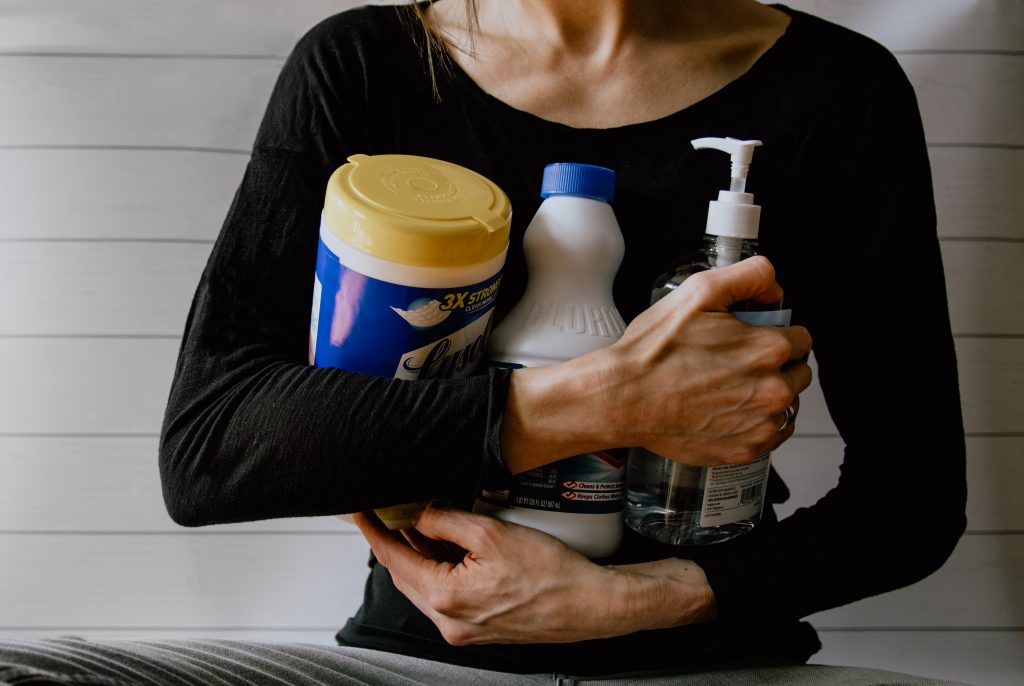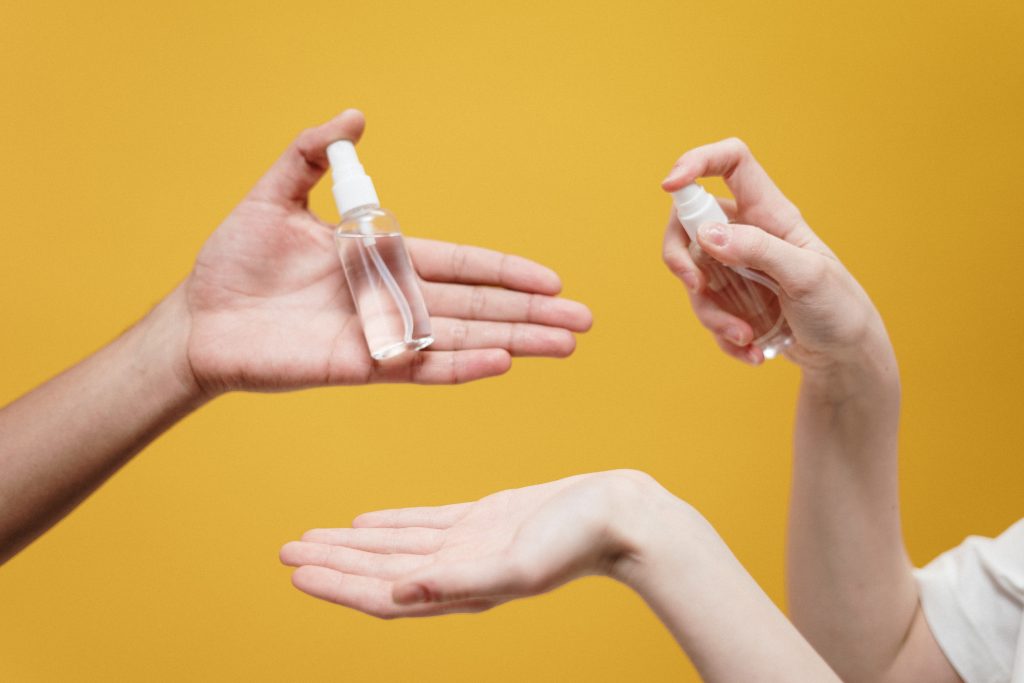
With the development of technology and information, people are becoming more educated and health conscious. This has even been strengthened by the hype in social media to go organic. Plus the real threat of the pandemic made us prioritize our health even more.
Unfortunately, even if we are so keen on reading each ingredient in the label of the products we buy, we are still unknowingly putting harmful chemicals in our bodies. Nasty toxins at home are always lurking; it’s ridiculous and mind-boggling and overwhelming!
After reading this article (if you’re anything like me and extremely particular about what my family is exposed to) you’ll surely just wanna make your own all-natural products to get rid of those toxins at home!
5 Common Toxins at Home

1,4-Dioxane
1,4-Dioxane is commonly found in products that produce suds such as shampoos, soaps, body washes, laundry detergents, hair relaxers, and more.
According to the U.S. Environmental Protection Agency (EPA), 1,4-Dioxane is a likely human carcinogen. Aside from that, exposure to this harmful chemical may cause eye, nose, and throat irritation, as well as kidney and liver damage. Not only that, but 1,4-Dioxane does not readily biodegrade. In fact, it is in groundwater throughout the United States.
What’s even more alarming about this chemical is the fact that you won’t find it on the product’s ingredient labels. 1,4-Dioxane is formed as common ingredients react together. Since it is not an ingredient per se, the Food and Drug Administration (FDA) does not require it to be in labels, making it very difficult to avoid.
How about we’ll just avoid those commercial products totally? I guess that’s safer than playing a guessing game with the labels and potential toxins at home.
Fragrances
“Fragrance” is a common word you’ll see on ingredient labels of cosmetics and personal care products, such as shampoos, shower gels, shaving creams, body lotions, and more. What you don’t know is that one word that seems harmless may be a toxic cocktail of various harmful chemicals.
Since fragrances are considered as “trade secrets”, the FDA does not require to disclose whatever harmful ingredient hides under the word “fragrance”. So, we can’t even examine a product’s safety by a mere glance on the label.
Currently, 186 banned chemicals used in fragrances are classified as carcinogens, endocrine disruptors, neurotoxins, and skin and respiratory irritants. However, even though there’s a safety standards list, compliance verification is not required. Hence, it’s still up to the manufacturer’s discretion and legal responsibility to follow it or not. As for us, we won’t be able to verify it.
Now you might argue that one tiny dose of chemicals can’t harm you, but note that you are facing these chemicals daily in small doses over the course of your lifetime, so we’re still talking prolonged exposure.
Formaldehyde
Another very common yet equally harmful chemical that is present in consumer products is Formaldehyde. A product may contain formaldehyde or release it, hence, you can’t just check it out on the ingredients label. Better yet, do not patronize chemical-based cosmetics, lotions, shampoo, conditioner, shower gel, fingernail polishes, and hair treatments.
According to the American Cancer Society, keratin hair smoothing treatments raise the concentration of formaldehyde in the air to a level that could be potentially hazardous.
This chemical is normally present at low levels which is less than 0.03 ppm in the air. When we use formaldehyde-releasing products and the chemical level goes up to 0.1 ppm, some people may experience burning sensations of the eyes, nose, and throat, coughing, wheezing, nausea, and skin irritation.
Formaldehyde in personal care products that touches the skin, however, can cause allergic contact dermatitis.
Moreover, The National Toxicology Program (NTP), the International Agency for Research on Cancer (IARC), the EPA, and the National Cancer Institute all concluded that formaldehyde is a human carcinogen.
Triclosan
Triclosan is a common ingredient in many household and personal care products because of its antibacterial and antifungal properties. Certain products that contain Triclosan are toothpaste, hand soaps, body washes, and cosmetics.
Triclosan is indeed effective in preventing gingivitis. But other than that, do we really need this ingredient in the products we’re using?
For consumer antiseptic products like your antibacterial soaps and body washes, the FDA says that Triclosan does not provide any additional benefit to human health over washing with good old soap.
Moreover, for healthcare antiseptic products, the FDA issued a final rule determining Triclosan as not generally recognized as safe and effective for use.
With all these FDA-released regulations, we can really question the effectiveness of Triclosan. Research has shown that triclosan alters hormone regulation and might contribute to the development of antibiotic-resistant germs. On direct skin contact this chemical can cause contact dermatitis and skin irritation.
The only silver lining here is that because Triclosan is an ingredient of over-the-counter products or drugs, it shows as an ingredient on the label. So the next time you shop for some personal care products, look for “Triclosan” first on the product label.
Phthalates
Phthalates are a group of chemicals that are literally everywhere. They are present in household items, cleaning items, food packagings, and personal care products like fragrance, cosmetics, hair care, and body wash. The Center for Disease Control and Prevention (CDC) found widespread exposure of phthalate across the nation.
With the growing concern over Phthalates, CDC recommended studying the adverse effect of Phthalates on human health further. Hence, a tidal wave of researches found that Phthalates link to low IQ, asthma, obesity and diabetes, neurodevelopmental and behavioral issues like attention-deficit/ hyperactivity disorder (ADHD) and autism disorders, altered reproductive development, male fertility issues, and breast cancer.
And like the other harmful chemicals stated above, the regulation still is lacking with Phthalates. They are very hard to avoid, not only due to their ubiquitous usage but because they are also absent from product labels. Some chemicals under the Phthalates group have been studied and interim bans are already in place. Still, a huge number of chemicals under Phthalates have not been studied and are still lurking in the products you’re using. Without enough research and proper regulations, would you still risk using those products and bringing in new toxins at home?
What Are Your Thoughts?

We are getting past the phase of consumer ignorance. What to do with this pressing issue boils down to the hands of three bodies:
- Government – Regulation is slow. It would likely take many years (hence, more related harm) before a strong regulated framework can fully protect us from exposure to these harmful chemicals. The question here is, can you wait and expose yourself in the meantime?
- Companies – The companies have full discretion on what chemicals they put in their products and, in some cases, on whether they include it on their product’s label. Corporate Social Responsibility dictates they should protect the welfare of their consumers, but without proper regulation, are they protecting you?
- Consumers – As consumers, we can also take the matter into our own hands. AVOID PRODUCTS WITH HARMFUL CHEMICALS, AVOID THOSE WITH VAGUE INGREDIENTS, and PURCHASE ORGANIC/ALL-NATURAL PRODUCTS INSTEAD.
Confused about how to start a toxin-free lifestyle? Visit simplyearth.com and you’ll see how easy it is. We have resources that can guide you along the way!

